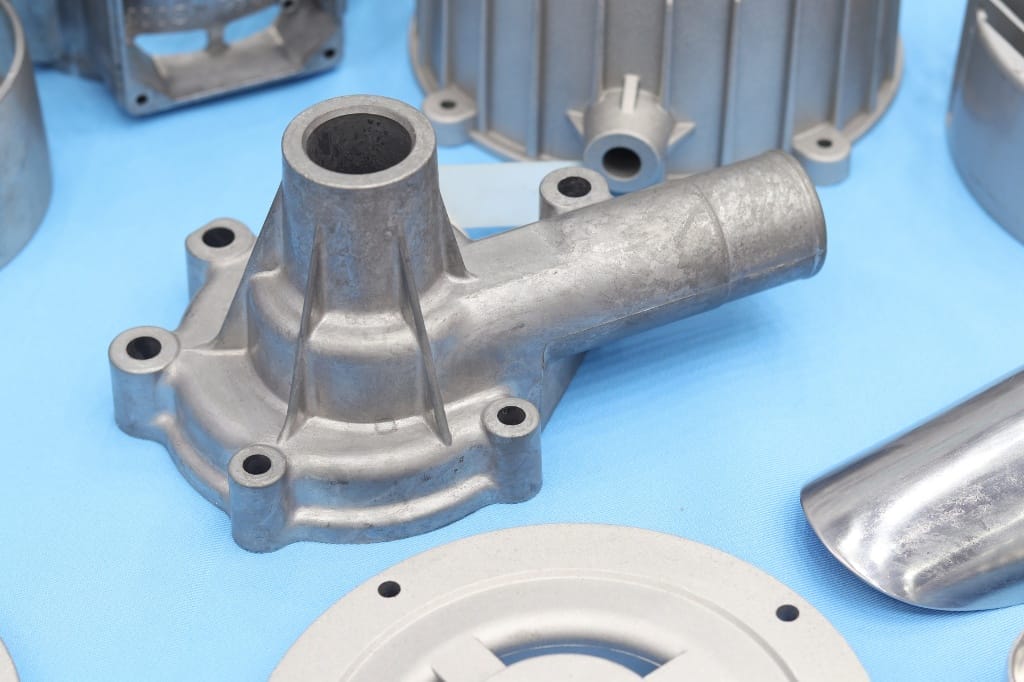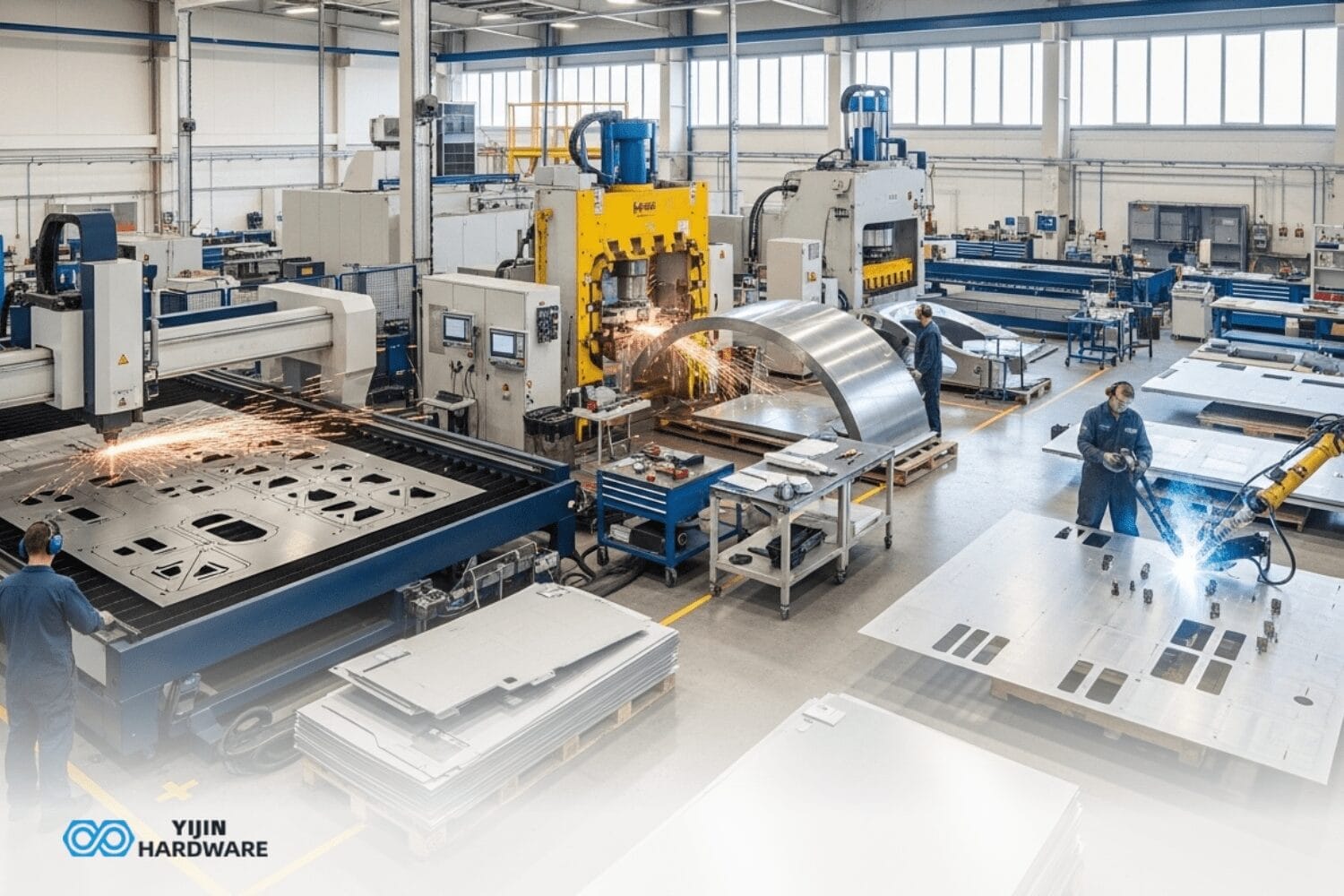Stainless steel types can make your head spin if you’re not familiar with them. Each grade has its own quirks and properties that aren’t just technical footnotes — they actually matter in the real world. These differences can literally make or break your manufacturing projects. Pick the wrong grade, and you might end up with parts failing way too early or costs that blow past your budget.
Choosing the right steel affects everything downstream: component lifespan, performance under stress, machining time, and bottom-line costs. This guide cuts through all the confusing classification systems to help you pick options that actually work for your specific needs.
Key Takeaways
- Austenitic grades like 304 and 316 fight corrosion like champions, but they’ll drive your machinists crazy without special techniques
- Martensitic grades can be hardened through heat treatment – perfect when you need cutting tools that hold an edge
- Duplex stainless gives you that rare combination of serious strength plus oxidation resistance for really tough environments
- Your metal choice directly impacts machining time, tool wear rates, and what your parts ultimately cost
- Finding the right grade means balancing what your application needs against what’s actually efficient to manufacture
What are the Main Classification Systems for Stainless Steel?
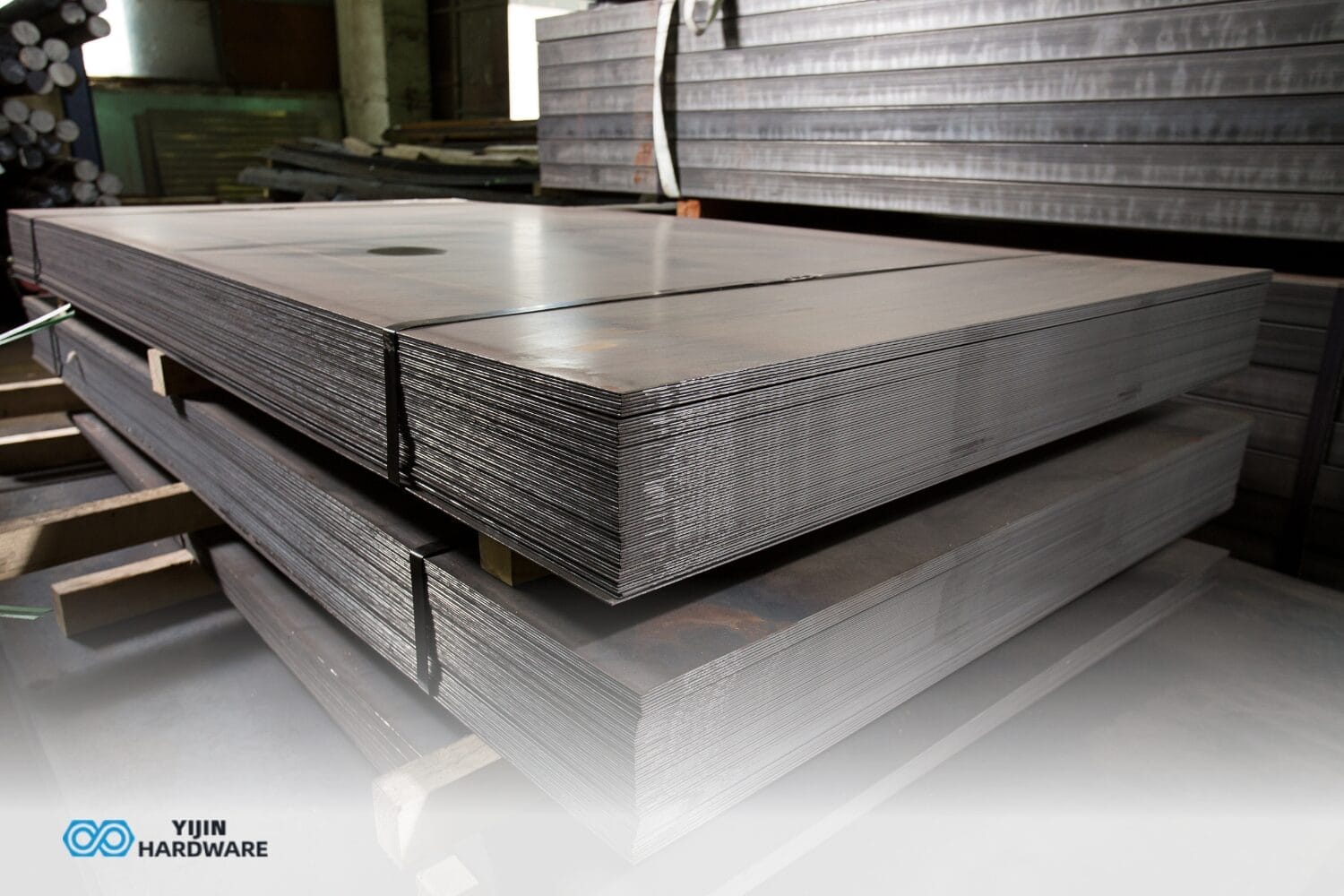
The stainless steel world has this maddening patchwork of classification systems that can confuse even veteran engineers. Americans naturally do things their own way — the American Iron and Steel Institute (AISI) and Society of Automotive Engineers (SAE) developed the 300-series numbers for austenitic grades and 400-series for the ferritic and martensitic varieties.
Things get more complicated with the Unified Numbering System throwing in those S-prefixed codes — they’ll call something S30400 instead of simply 304. Europeans take yet another approach with their 1.4xxx format (1.4301 is what they call 304).
These competing systems actually serve a purpose, helping engineers translate materials across international borders and supply chains. Without these standardized codes, global manufacturing would become nearly impossible. The trick is learning which system applies to your specific situation and suppliers.
Four Main Types
All these classifications basically organize stainless steel into four main types based on their crystalline structure: austenitic, ferritic, martensitic, and duplex. Pretty straightforward once you get the hang of it.
What makes a steel “stainless” in the first place? The classification criteria include having at least 10.5% chromium, plus considerations for mechanical properties like tensile strength and hardness, and the underlying metallurgical structure.
The global market for this stuff is massive — about 13.37 million tons in 2025, and projected to hit 16.85 million tons by 2030, growing at 4.69% annually. That’s a lot of stainless!
| Classification System | Example Grade | Region | Structure Indicator |
|---|---|---|---|
| AISI/SAE | 304, 316, 410 | North America | 3xx = austenitic, 4xx = ferritic/martensitic |
| UNS | S30400, S31600 | Global | S-prefix for stainless |
| EN | 1.4301, 1.4401 | Europe | 1.4xxx format |
Chemical Composition Influence
- Chromium: Minimum 10.5% creates passive oxide layer for resistance to corrosion
- Nickel: Enhances ductility and corrosion resistance
- Molybdenum: Improves pitting and resistance to chloride
- Carbon content: Affects hardness but can reduce corrosion resistance
- Nitrogen: Increases strength in duplex alloys
How do Austenitic Stainless Steel Grades Compare for CNC Applications?
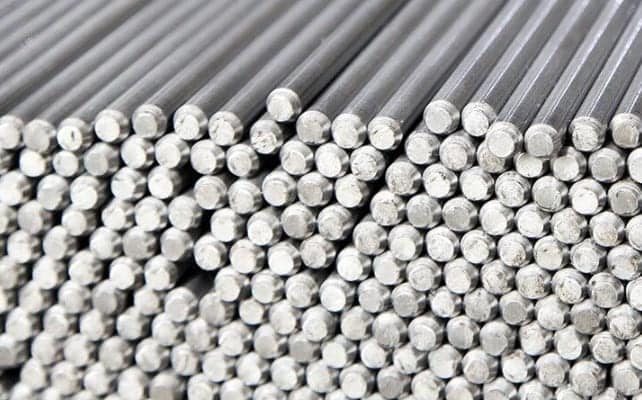
Austenitic stainless steel is a real pain to machine thanks to that nasty work-hardening tendency. Take 304 — the most common grade you’ll run into — it’s got that 18% chromium, 8% nickel mix that fights corrosion like a champ, but man does it fight back in the machine. Then there’s 316, which throws in 2-3% molybdenum to handle chloride environments better, but your tools pay the price with faster wear.
The thing with all these austenitic grades is they’re super ductile, which makes chip control a nightmare. The chips just want to stick around rather than breaking cleanly. On the plus side, they don’t stick to magnets, and they weld beautifully, which opens up all kinds of applications.
If you’re dealing with parts that need welding after machining, look at 316L. The “L” means low carbon, which helps with machining and prevents that carbide precipitation during welding that can mess up your corrosion resistance.
We’ve learned the hard way that sharp tools and rigid setups are non-negotiable with this stuff. Let your cutting edge dull even slightly, and you’ll create a work-hardened layer that’ll destroy your next tool.
Common Austenitic Grades and Properties
304 grade is your standard stainless — 18-20% chromium, 8-10% nickel, giving good overall corrosion resistance. 316 kicks it up a notch with 16-18% chromium, 10-14% nickel, plus 2-3% molybdenum for superior corrosion fighting. When heat’s an issue, 321 adds titanium to prevent breakdown at high temperatures.
CNC Machinability Tips
Machine rigidity is non-negotiable — any flex spells disaster. Keep those cutting edges razor-sharp, or suffer the work-hardening consequences. Counter-intuitively, go with higher feed rates but moderate speeds. And maintain consistent cutting pressure — any interruption will snap your tools faster than you’d believe.
We’ve seen plenty of good machinists learn these lessons the hard way. Austenitic stainless demands respect in the shop.
What are the Key Properties of Ferritic Stainless?
Ferritic stainless steel packs 16-18% chromium with barely any nickel, giving it those magnetic properties machining teams love. It’s significantly easier to machine than those tough austenitic types. The 430 stainless steel grade handles corrosion decently in milder environments. One of the biggest advantages? Ferritic stainless steel maintains consistent properties during machining with minimal work hardening — perfect for automotive applications where dimensional stability and consistent surface finish matter.
Unlike martensitic grades, ferritic stainless can’t be hardened through heat treatment, though it maintains excellent formability. The cost advantage is substantial due to that minimal nickel content, making it economical for components that don’t need austenitic performance levels.
CNC operations really shine with ferritic stainless. Shops can run higher cutting speeds compared to austenitic grades, the chips form cleaner without that stringy mess, and cutting tools experience much less built-up edge. The machinability difference becomes immediately apparent when switching from austenitic to ferritic grades on the same machine.
Key Ferritic Grades
- 430 stainless steel: 16-18% Cr, 0% Ni
- 434 stainless steel: Similar to 430 with added molybdenum
- 444 stainless steel: Higher chromium with molybdenum for improved performance
How do Martensitic Stainless Steel Grades Perform in Manufacturing?
Martensitic stainless steel brings something unique to the table — heat-treatability to seriously high hardness levels. This makes it perfect for applications where strength matters more than anything. Grade 420 packs 12-14% chromium with higher carbon content, giving decent corrosion resistance but absolutely excellent hardness after heat treatment. CNC machining these grades requires specialized tooling, especially when dealing with already-hardened steel that contains significant carbon.
The carbon content is what enables martensitic grades to harden through heat treatment. Grade 440 stainless steel can reach impressive hardness values, providing exceptional wear resistance. It’s the second most common choice for cutting tools, right behind high-speed steel.
For best results in the shop, always try to work with the material in the annealed condition when possible. Complete all machining operations first, then heat treat afterward to reach those final hardness requirements. The difference in machinability between annealed and hardened martensitic stainless is like night and day.
Machining Parameters for Martensitic Grades
- Carbide tooling is absolutely essential for hardened conditions — nothing else stands up to the punishment
- Extremely rigid setups are non-negotiable to handle those intense cutting forces
- Adequate cooling must be maintained to control the significant heat generation that can ruin both parts and tools
- Pre-machining in the annealed state whenever possible saves tremendous headaches and tooling costs
What Makes Duplex and Super Duplex Stainless Steels Unique?
Duplex stainless steel delivers something truly special — a combination of austenitic and ferritic microstructures that creates applications requiring both high strength and serious corrosion resistance. Type 2205 (with its 22% Cr, 5% Ni, 3% Mo composition) offers approximately double the strength of standard 304 while providing excellent resistance in chloride environments. CNC machining these duplex grades demands specialized tooling due to their extremely high tensile strength, and cutting speeds typically need to run lower than those used for austenitic grades.
The exceptional resistance to stress corrosion cracking sets duplex grades apart from conventional stainless. This balanced microstructure creates a unique combination of strength and corrosion performance that justifies the premium price tag.
Super duplex stainless steel grades take performance even further with dramatically improved corrosion resistance. These grades excel in demanding marine applications but require particularly advanced machining strategies to process effectively:
- Cutting speeds must be reduced 30-40% compared to austenitic grades
- Rigid tooling setups become absolutely critical to prevent chatter
- Tool coatings specifically designed for super duplex are worth the investment
- Heat management through proper coolant application prevents work hardening
Stainless Steel Machinability Comparison
| Grade Family | Relative Machinability | Tool Wear Rate | Surface Finish Quality | Cutting Speed Reduction |
|---|---|---|---|---|
| Free-Machining (303) | Excellent | Low | Excellent | 0% (Base) |
| Ferritic (430) | Good | Low-Medium | Good | 10-15% |
| Austenitic (304) | Moderate | Medium-High | Good | 20-30% |
| Martensitic (420) Annealed | Good | Medium | Good | 15-25% |
| Martensitic (420) Hardened | Poor | Very High | Moderate | 40-60% |
| Duplex | Challenging | High | Moderate | 30-40% |
Picking the right stainless steel means finding that sweet spot between what your application needs and what won’t drive your machinists crazy. Environmental factors determine how much corrosion resistance you need, while mechanical requirements set the strength specifications. For precision CNC machining, material machinability makes a huge difference in production efficiency—those austenitic grades typically add 30-40% to machining time compared to 416 stainless, which machines beautifully but trades off some corrosion resistance.
Material selection affects everything downstream — production parameters, tool selection, and bottom-line manufacturing costs. Grades with improved machinability can slash production time and significantly reduce those tooling expenses that add up fast.
At Yijin Hardware, the engineering team regularly evaluates the differences between 304 and other grades to recommend stainless steel options that balance performance requirements with manufacturing efficiency. The right choice often saves customers thousands in production costs while still meeting all performance specifications.
Selection Criteria Checklist
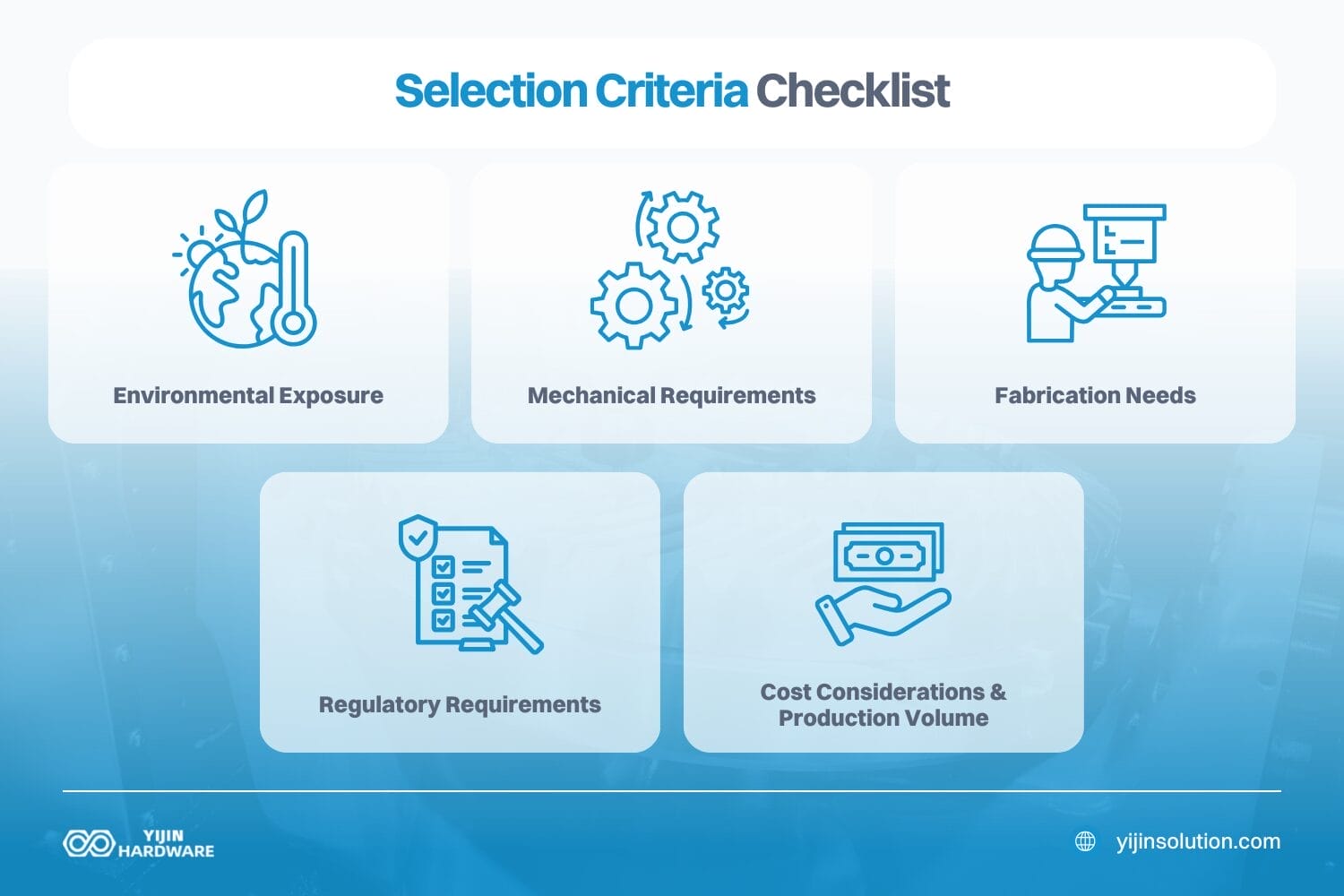
- Environmental exposure (chemicals, temperature)
- Mechanical requirements (strength, hardness)
- Fabrication needs (welding, forming, machining)
- Regulatory requirements
- Cost considerations and production volume
Learn More About Stainless Steel Machining with Yijin Hardware
Yijin Hardware brings together deep material knowledge and cutting-edge CNC machining capabilities to produce precision stainless steel components that perform. Our engineering team doesn’t just take orders — we help customers select the perfect grade for specific applications while ensuring manufacturing processes deliver consistent quality every time. Ready to get started? Contact Yijin Hardware today for material selection guidance and competitive quotes on upcoming projects.
Our company specializes in those tricky components with impossibly tight tolerances and demanding performance requirements that give other shops nightmares. With facilities in China, we offer that rare combination of cost-effective manufacturing without sacrificing quality or blowing delivery schedules. When other suppliers say “that’s impossible” or “not at that price,” we find a way to make it happen.
Stainless Steel Grades Chart FAQs
Which is better 304 or 316 stainless steel?
316 definitely beats 304 when it comes to corrosion resistance, especially in environments with chlorides, thanks to that molybdenum content. You’ll want 316 for anything marine-related, chemical processing equipment, or medical devices where salt exposure happens. But all that extra performance hits your wallet — expect to pay about 25% more for 316. For general applications that don’t involve harsh chemicals or salt exposure, 304 makes much more economic sense. Most customers find 304 perfectly adequate unless they have specific environmental challenges.
Which stainless steel is better, 304 or 18-10?
Here’s the thing — 304 stainless steel and 18-10 stainless steel are actually the same material. The 18-10 designation is just a commercial term, indicating it contains approximately 18% chromium and 10% nickel. You’ll see 18-10 stamped on consumer products like flatware and cookware because it sounds fancier to the average shopper. When you’re dealing with industrial applications, everyone uses the standardized 304 designation. So there’s no quality difference — just different naming conventions for different markets.
Is 420 stainless better than 316?
Asking whether 420 stainless is better than 316 is like asking if a hammer is better than a screwdriver — they’re designed for completely different jobs. Grade 420 is martensitic stainless that can be hardened through heat treatment to get really tough, but has only moderate corrosion resistance. Grade 316 is austenitic with excellent corrosion fighting powers but can’t be hardened through heat treatment. Your choice depends entirely on whether you need hardness (go with 420) or superior corrosion protection (316 is your answer). The right grade depends on the specific application requirements, not some arbitrary “better” ranking.
Back to Top: Stainless Steel Grades Chart







